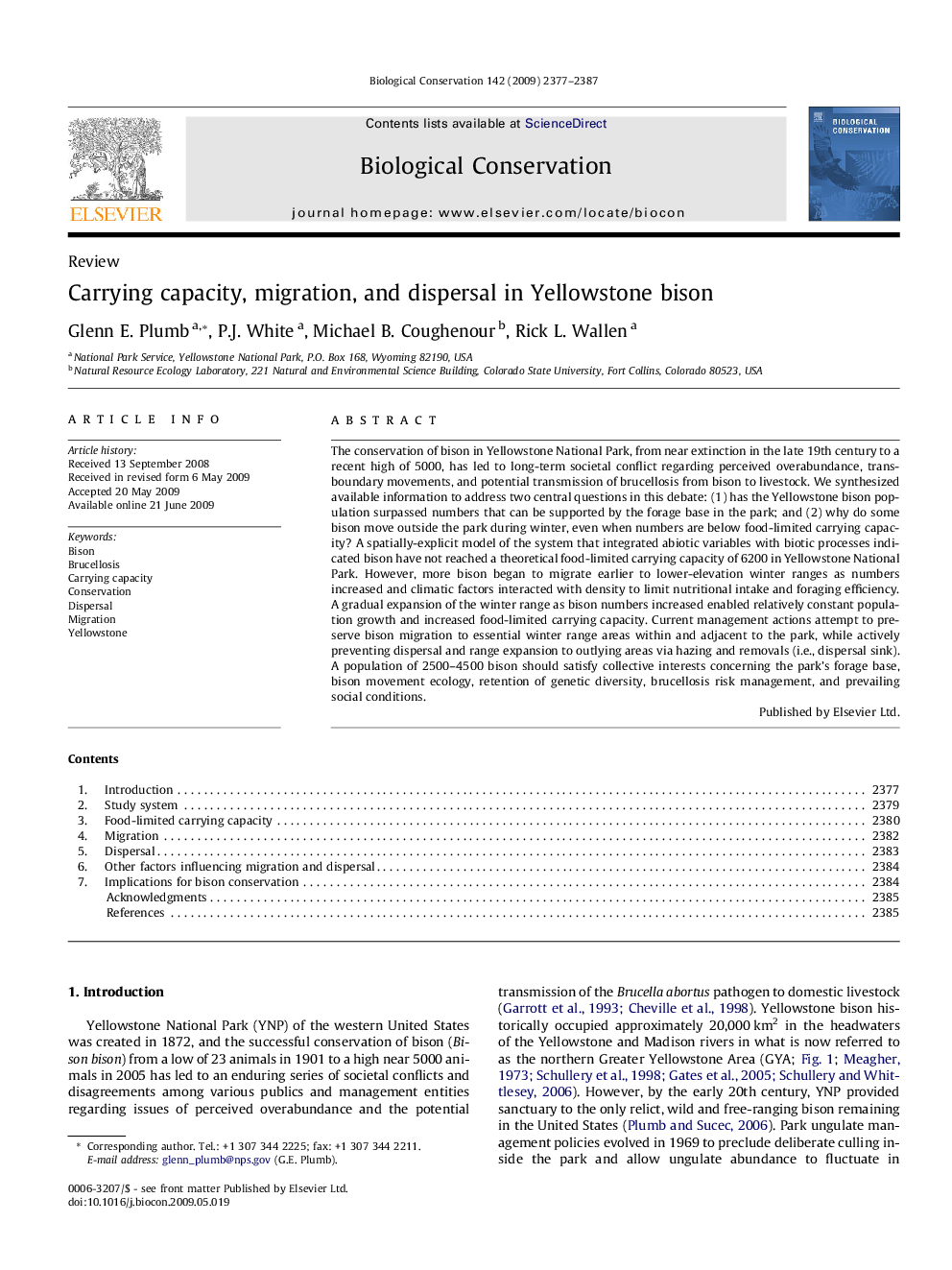| Article ID | Journal | Published Year | Pages | File Type |
|---|---|---|---|---|
| 4385838 | Biological Conservation | 2009 | 11 Pages |
Abstract
The conservation of bison in Yellowstone National Park, from near extinction in the late 19th century to a recent high of 5000, has led to long-term societal conflict regarding perceived overabundance, trans-boundary movements, and potential transmission of brucellosis from bison to livestock. We synthesized available information to address two central questions in this debate: (1) has the Yellowstone bison population surpassed numbers that can be supported by the forage base in the park; and (2) why do some bison move outside the park during winter, even when numbers are below food-limited carrying capacity? A spatially-explicit model of the system that integrated abiotic variables with biotic processes indicated bison have not reached a theoretical food-limited carrying capacity of 6200 in Yellowstone National Park. However, more bison began to migrate earlier to lower-elevation winter ranges as numbers increased and climatic factors interacted with density to limit nutritional intake and foraging efficiency. A gradual expansion of the winter range as bison numbers increased enabled relatively constant population growth and increased food-limited carrying capacity. Current management actions attempt to preserve bison migration to essential winter range areas within and adjacent to the park, while actively preventing dispersal and range expansion to outlying areas via hazing and removals (i.e., dispersal sink). A population of 2500-4500 bison should satisfy collective interests concerning the park's forage base, bison movement ecology, retention of genetic diversity, brucellosis risk management, and prevailing social conditions.
Related Topics
Life Sciences
Agricultural and Biological Sciences
Ecology, Evolution, Behavior and Systematics
Authors
Glenn E. Plumb, P.J. White, Michael B. Coughenour, Rick L. Wallen,
